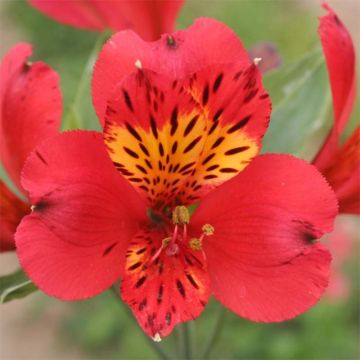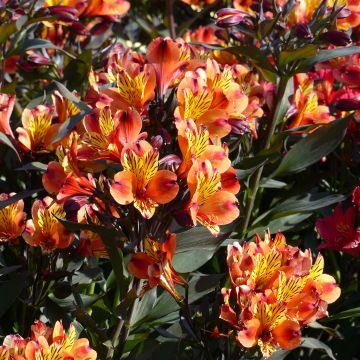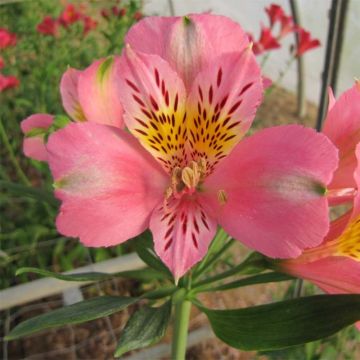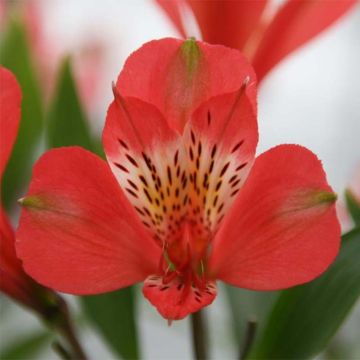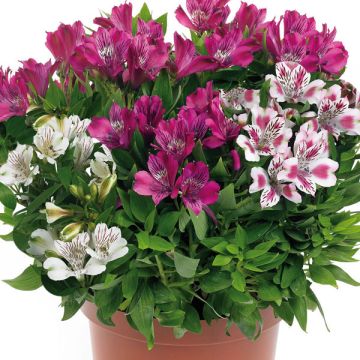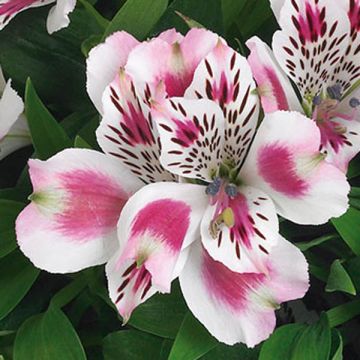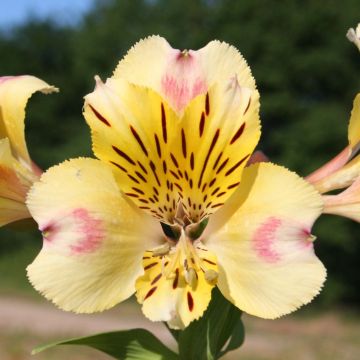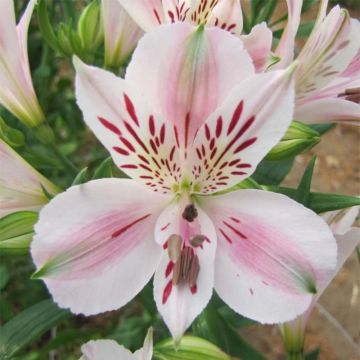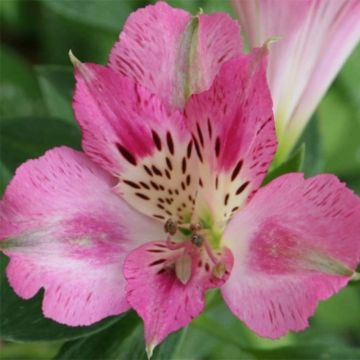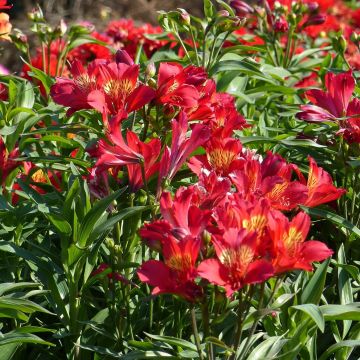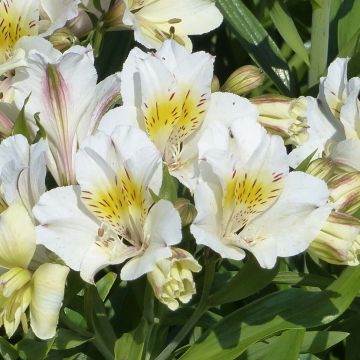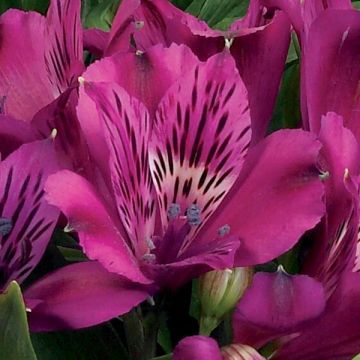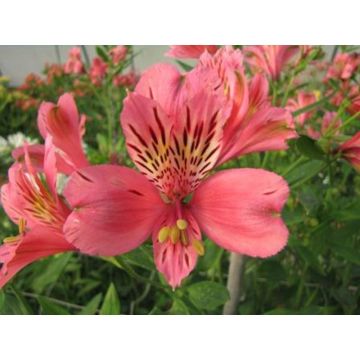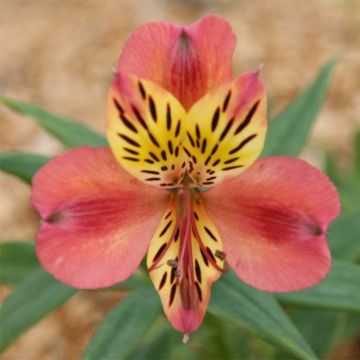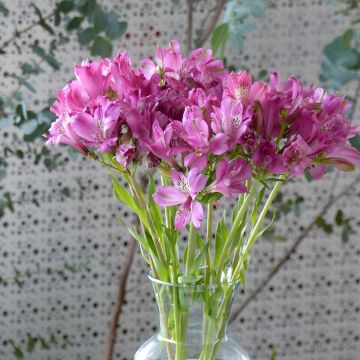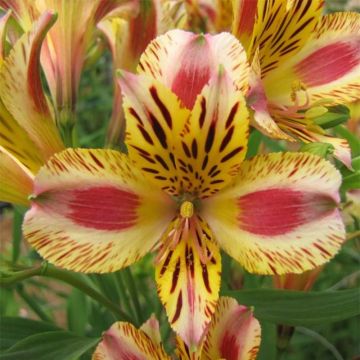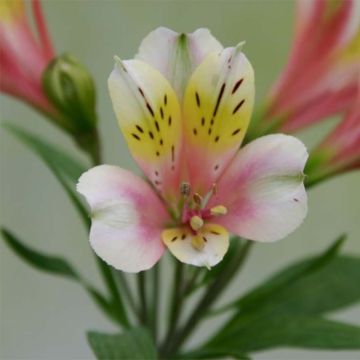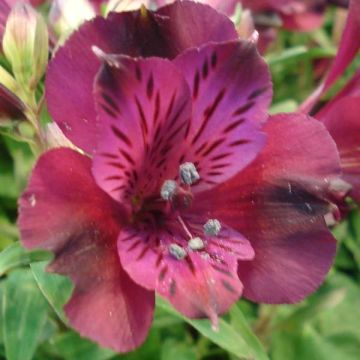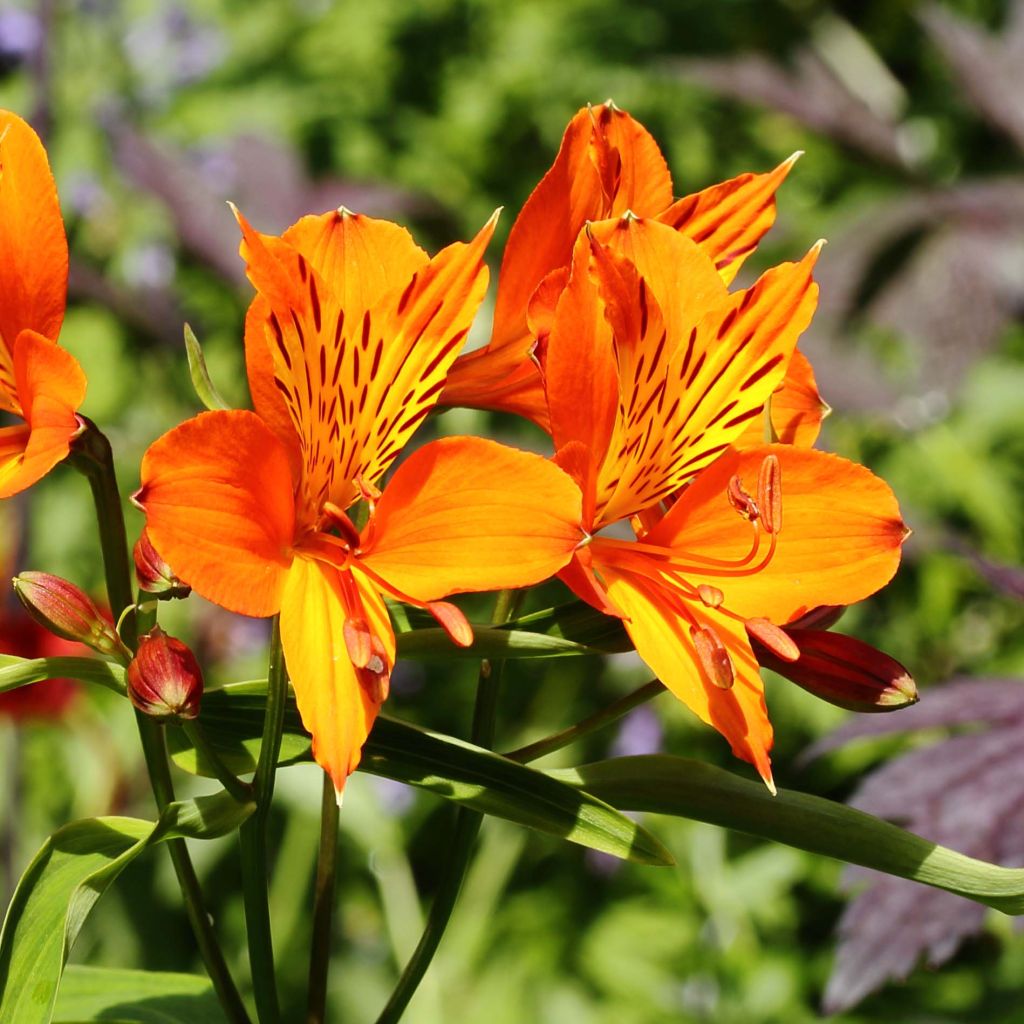

Alstroemeria aurea Orange King - Lys des Incas
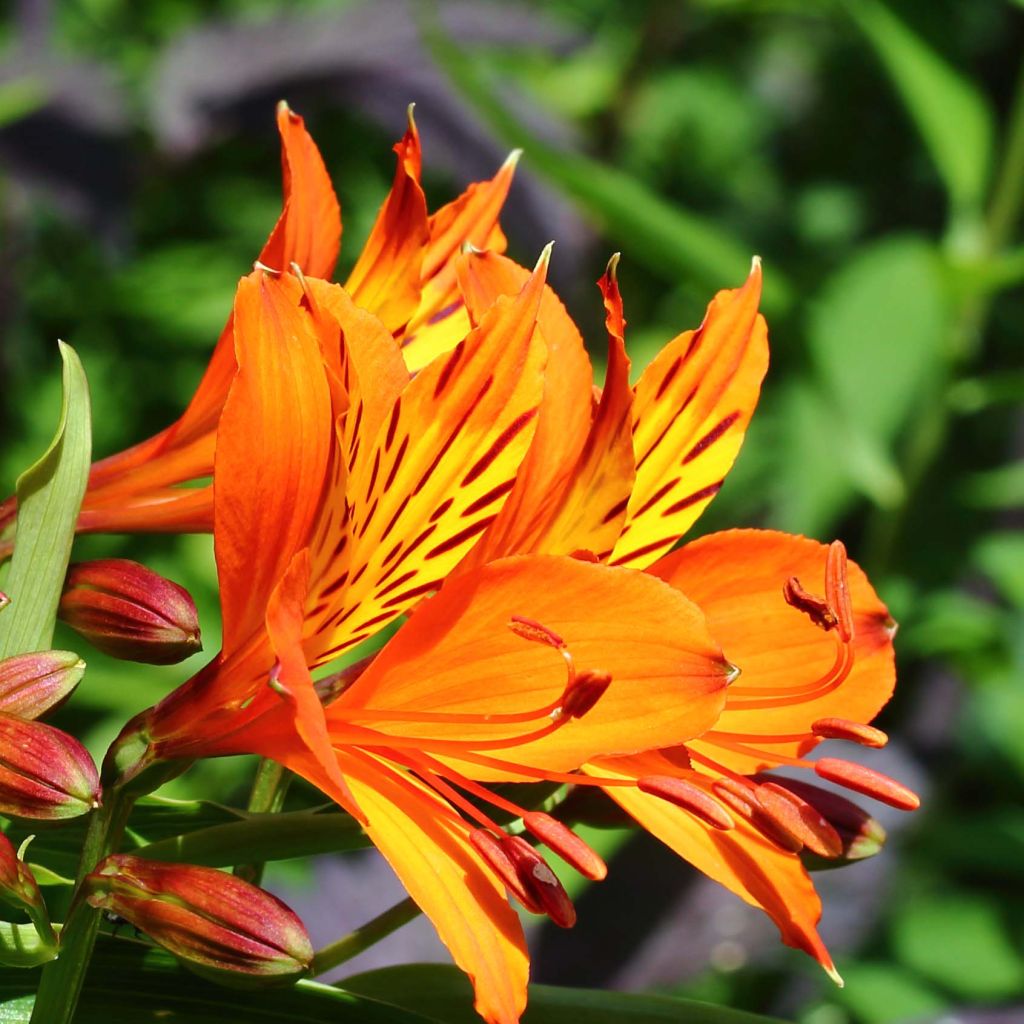

Alstroemeria aurea Orange King - Lys des Incas
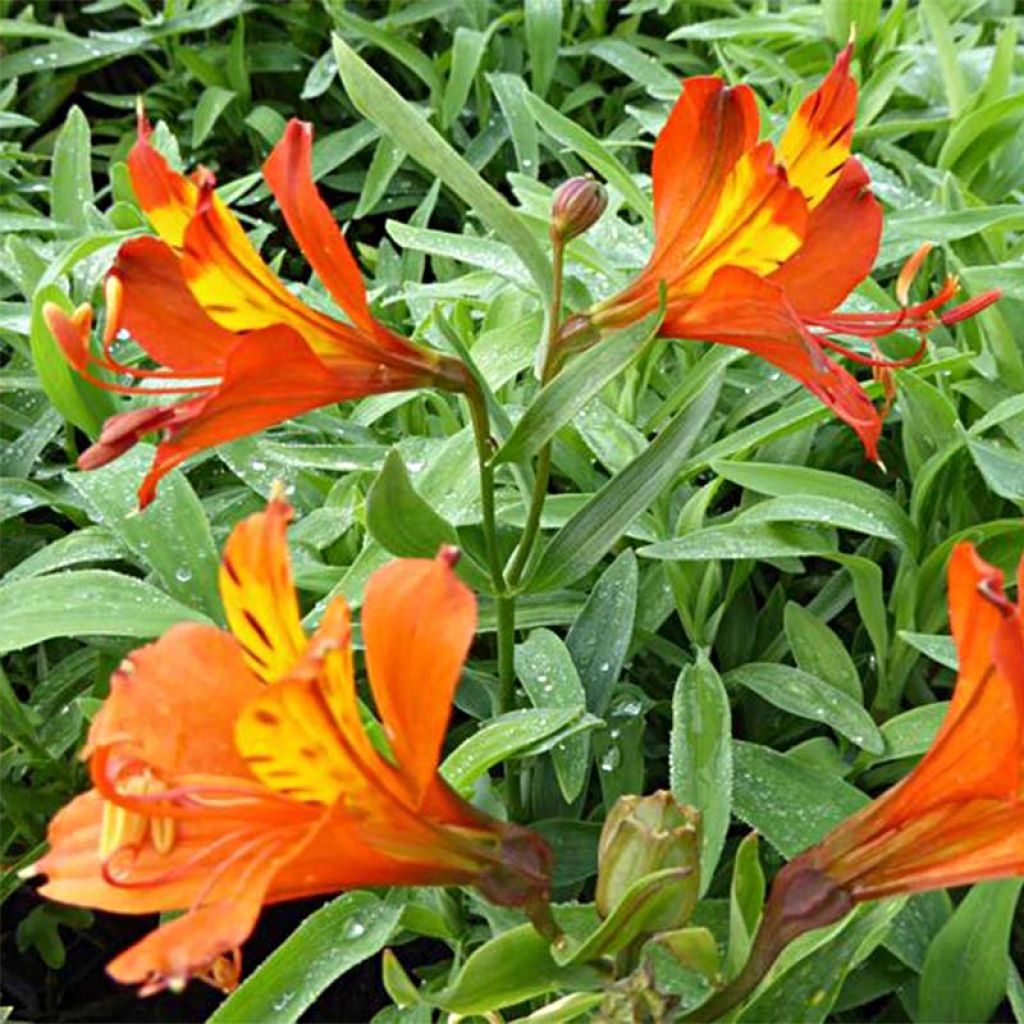

Alstroemeria aurea Orange King - Lys des Incas
Alstroemeria aurantiaca Orange King
Alstroemeria aurantiaca Orange King
Peruvian Lily, Lily of the Incas
Why not try an alternative variety in stock?
View all →This plant carries a 12 months recovery warranty
More information
We guarantee the quality of our plants for a full growing cycle, and will replace at our expense any plant that fails to recover under normal climatic and planting conditions.
From €5.90 for pickup delivery and €6.90 for home delivery
Express home delivery from €8.90.
Does this plant fit my garden?
Set up your Plantfit profile →
Description
Alstroemeria 'Orange King' is a safe bet. This old variety of Inca Lily with flamboyant flowers is both a good border plant and an excellent cut flower. Suitable for outdoor cultivation, in all climates, it is hardy down to -15°C (5°F) in well-drained soil. Its exotic-looking lily flowers are light and vibrant orange, speckled with yellow and streaked with brown at the throat.
Alstroemeria 'Orange King' is derived from a tuberous species called Alstroemeria aurantiaca, the yellow alstroemeria, probably the hardiest of all. Its ancestor is native to South America, particularly the Chilean Andes and Patagonia. This high-altitude plant belonging to the Alstroemeriaceae family is relatively hardy, and likes cool, well-drained soil in lightly wooded and fresh areas. Slow to establish, the Inca Lilies can disappear or... become invasive! Quirky but fantastic plants, very sensitive to growing conditions, they are "indestructible" when you find the right spot for them.
'Orange King' quickly forms clumps of robust leafy stems that can reach 80 cm (32in) in height when in flower, with a spread of 50 cm. Flowering takes place in July-August, depending on the climate. The open flowers are gathered in terminal umbels. They are composed of 3 small light orange central petals, widely speckled with yellow towards the base, streaked with brown-purple, surrounded by 3 larger petals, of the same light and vibrant orange washed with yellow. The outer side of the petals is a deeper orange, tending towards red. Each plant can produce at least 20 flowers. The foliage, abundant in this Alstroemeria aurantiaca, is arranged on the upper part of the stems. The leaves of this variety are an elegant slightly greyish green shade. The foliage and stems disappear in winter, leaving only the trailing stump with fleshy roots underground. This stump is sensitive to the shock of transplantation, especially in older plants.
When mature, 'Orange King' Alstroemeria is a magnificent sight in borders or on a semi-shaded slope. This plant will blend well, for example, with the white flowers of chamomiles or the blue of perennial flax. It can also be paired with orange or blue shrubby salvias, or with grasses; Stipa, small Miscanthus or Muhlenbergia capillaris will take over from its flowering with their magnificent foliage and late-season blooms. One can also plant Ceratostigma plumbaginoides alongside it, with intense blue flowers and red foliage in October. Pot cultivation is also possible.
Note: Please be aware that our young plug plants are professional products intended for experienced gardeners: upon receipt, transplant and store them under cover (veranda, greenhouse, cold frame...) at a temperature above 14°C (57.2°F) for a few weeks before installing them outdoors once the risk of frost is definitively eliminated.
Report an error about the product description
Alstroemeria aurantiaca Orange King in pictures
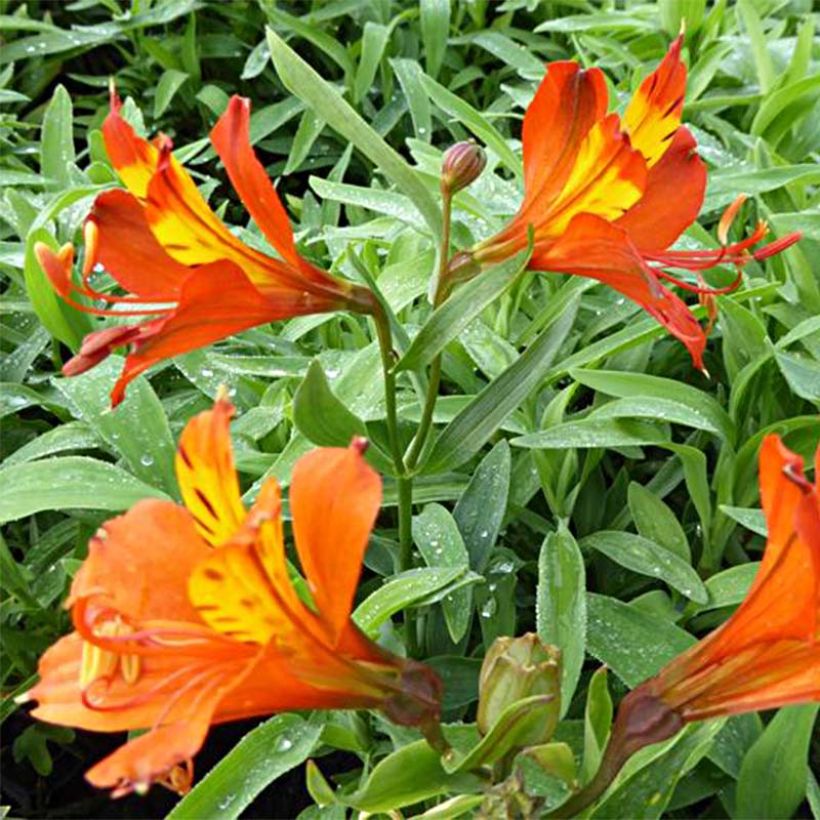

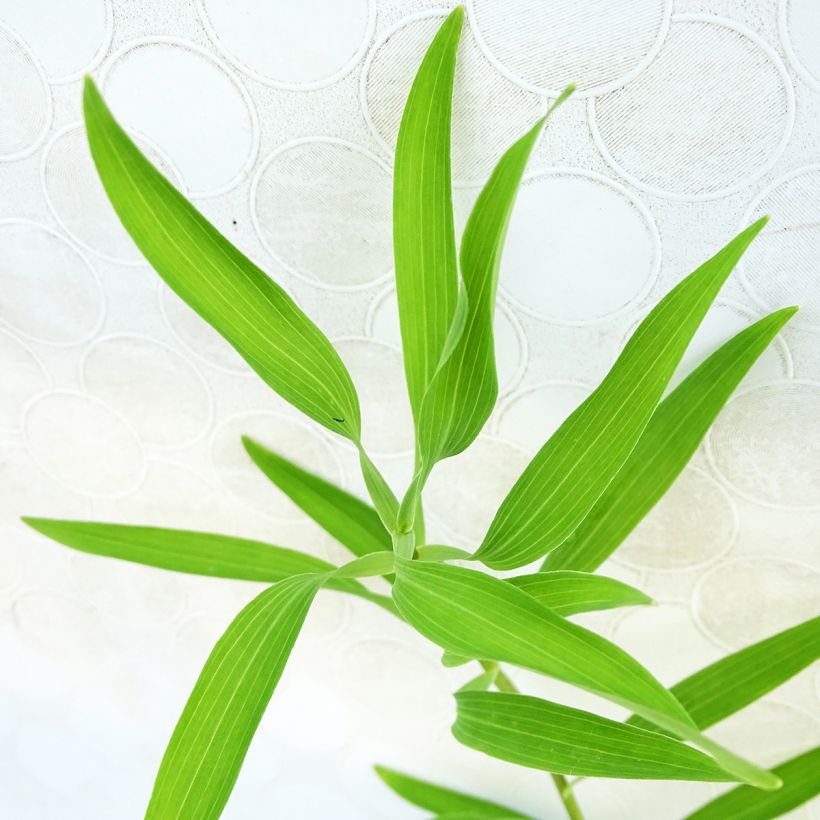

Flowering
Foliage
Plant habit
Botanical data
Alstroemeria
aurantiaca
Orange King
Alstroemeriaceae
Peruvian Lily, Lily of the Incas
Alstroemeria aurea
Cultivar or hybrid
Other Alstroemerias
Planting and care
Alstroemerias should be planted in spring, choosing a sunny or semi-shade location, in a light, well-drained, well-prepared soil, preferably sandy or loamy and slightly acidic to neutral, and not too fertile. While they appreciate moistre to support their flowering, they adapt quite well to dry soils in summer. These plants are quite hardy if the soil does not remain waterlogged in winter. The stump can be protected with a thick mulch of leaves or fern fronds in autumn. Slugs (and turtles) love young shoots; make sure to protect them.
Since the plant completely disappears in autumn, it is advisable to mark its location. Do not hoe near the clump: the tuberous roots are often wandering and fragile. Weed carefully by hand if necessary.
Planting period
Intended location
Care
-
, onOrder confirmed
Reply from on Promesse de fleurs
Haven't found what you were looking for?
Hardiness is the lowest winter temperature a plant can endure without suffering serious damage or even dying. However, hardiness is affected by location (a sheltered area, such as a patio), protection (winter cover) and soil type (hardiness is improved by well-drained soil).

Photo Sharing Terms & Conditions
In order to encourage gardeners to interact and share their experiences, Promesse de fleurs offers various media enabling content to be uploaded onto its Site - in particular via the ‘Photo sharing’ module.
The User agrees to refrain from:
- Posting any content that is illegal, prejudicial, insulting, racist, inciteful to hatred, revisionist, contrary to public decency, that infringes on privacy or on the privacy rights of third parties, in particular the publicity rights of persons and goods, intellectual property rights, or the right to privacy.
- Submitting content on behalf of a third party;
- Impersonate the identity of a third party and/or publish any personal information about a third party;
In general, the User undertakes to refrain from any unethical behaviour.
All Content (in particular text, comments, files, images, photos, videos, creative works, etc.), which may be subject to property or intellectual property rights, image or other private rights, shall remain the property of the User, subject to the limited rights granted by the terms of the licence granted by Promesse de fleurs as stated below. Users are at liberty to publish or not to publish such Content on the Site, notably via the ‘Photo Sharing’ facility, and accept that this Content shall be made public and freely accessible, notably on the Internet.
Users further acknowledge, undertake to have ,and guarantee that they hold all necessary rights and permissions to publish such material on the Site, in particular with regard to the legislation in force pertaining to any privacy, property, intellectual property, image, or contractual rights, or rights of any other nature. By publishing such Content on the Site, Users acknowledge accepting full liability as publishers of the Content within the meaning of the law, and grant Promesse de fleurs, free of charge, an inclusive, worldwide licence for the said Content for the entire duration of its publication, including all reproduction, representation, up/downloading, displaying, performing, transmission, and storage rights.
Users also grant permission for their name to be linked to the Content and accept that this link may not always be made available.
By engaging in posting material, Users consent to their Content becoming automatically accessible on the Internet, in particular on other sites and/or blogs and/or web pages of the Promesse de fleurs site, including in particular social pages and the Promesse de fleurs catalogue.
Users may secure the removal of entrusted content free of charge by issuing a simple request via our contact form.
The flowering period indicated on our website applies to countries and regions located in USDA zone 8 (France, the United Kingdom, Ireland, the Netherlands, etc.)
It will vary according to where you live:
- In zones 9 to 10 (Italy, Spain, Greece, etc.), flowering will occur about 2 to 4 weeks earlier.
- In zones 6 to 7 (Germany, Poland, Slovenia, and lower mountainous regions), flowering will be delayed by 2 to 3 weeks.
- In zone 5 (Central Europe, Scandinavia), blooming will be delayed by 3 to 5 weeks.
In temperate climates, pruning of spring-flowering shrubs (forsythia, spireas, etc.) should be done just after flowering.
Pruning of summer-flowering shrubs (Indian Lilac, Perovskia, etc.) can be done in winter or spring.
In cold regions as well as with frost-sensitive plants, avoid pruning too early when severe frosts may still occur.
The planting period indicated on our website applies to countries and regions located in USDA zone 8 (France, United Kingdom, Ireland, Netherlands).
It will vary according to where you live:
- In Mediterranean zones (Marseille, Madrid, Milan, etc.), autumn and winter are the best planting periods.
- In continental zones (Strasbourg, Munich, Vienna, etc.), delay planting by 2 to 3 weeks in spring and bring it forward by 2 to 4 weeks in autumn.
- In mountainous regions (the Alps, Pyrenees, Carpathians, etc.), it is best to plant in late spring (May-June) or late summer (August-September).
The harvesting period indicated on our website applies to countries and regions in USDA zone 8 (France, England, Ireland, the Netherlands).
In colder areas (Scandinavia, Poland, Austria...) fruit and vegetable harvests are likely to be delayed by 3-4 weeks.
In warmer areas (Italy, Spain, Greece, etc.), harvesting will probably take place earlier, depending on weather conditions.
The sowing periods indicated on our website apply to countries and regions within USDA Zone 8 (France, UK, Ireland, Netherlands).
In colder areas (Scandinavia, Poland, Austria...), delay any outdoor sowing by 3-4 weeks, or sow under glass.
In warmer climes (Italy, Spain, Greece, etc.), bring outdoor sowing forward by a few weeks.

































